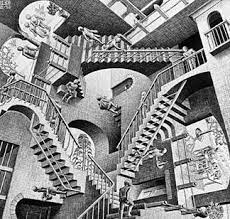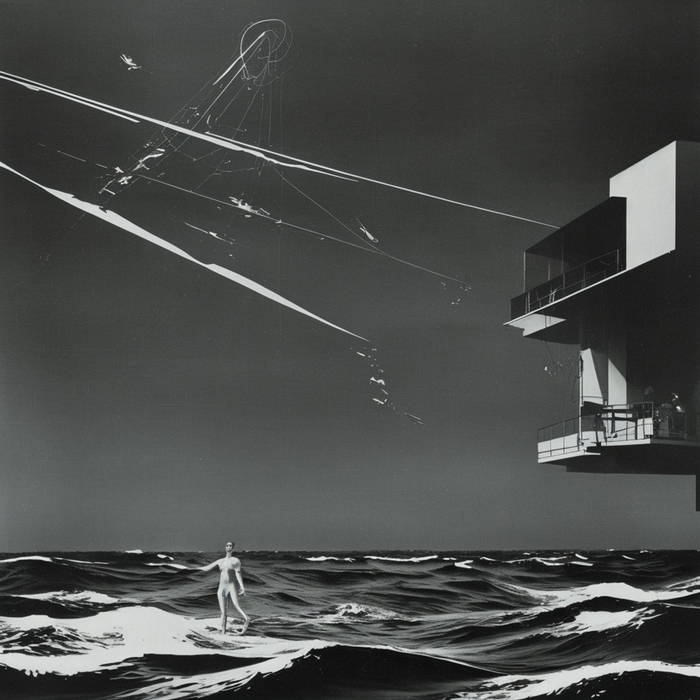cross-posted from: https://lemmit.online/post/2823044
This is an automated archive made by the Lemmit Bot.
The original was posted on /r/nostalgia by /u/Character-Emotion237 on 2024-05-02 22:39:26.
Yep. It feels weird to be nostalgic for windows 7, but it was honestly not bad. I think the reason why the loss of aero glass feels cold and sterile is because it honestly is. The whole metro/material design thing is just garbage. I don’t want buttons that look like abstract squares, I want buttons that look like buttons. What brain-dead designer honestly likes minimal design over skeumorphism?
I’m no designer (although I might be brain-dead), but I prefer minimalist UI over skeumorphism.
Eh, I was being hyperbolic when I probably shouldn’t have been. It just feels very lifeless to me. I understand the arguments for it, it just feels soulless and lifeless.
It’s perfect to reflect the soulless company from wence it spawned.
You want your computer to have soul?
But also win 7 had little to do with skeumorphism
Perhaps could be considered “frosted glass?”
Frutiger Aero is commonly used to describe it
From what I’ve read, Frutiger Aero is considered to be a form of skeumorphism, or at least skeumorphic-adjacent.
deleted by creator
I like them in different places. I minimalism in car screens because the focus should be the physical interior. But skeumorphism is way better for usability on a PC.
Damn I missed NT 4’s clean style back then…
They were trying to unify their desktop and tablet UIs (touch-driven) which itself was fucking stupid since people interact with them totally differently.
I remember having a Wacom usb tablet at the time, and Windows kept slapping a virtual keyboard in the middle of my screen. It was infuriating, to say the least.
Especially at the time, and even somewhat still today, it saves bandwidth on virtual connections. Some places run thousands of virtual desktops for their users.
I liked Aero better, too
Counter-point, you could do that with skeumorphism via procedural generation by sending the base algorithms instead of icons and then rendering the icons client-side. It’s already done to a limited extent when it comes to games. Substance Designer and Painter are industry standards when it comes to creating textures and materials, and they can generate textures with resolutions anywhere from 128x128 to 8192x8192 without requiring any additional effort due to their procedural workflow. Granted, the textures are usually “baked” before actually being imported into the game engine, which is why you can’t tell a game to generate 8k textures (the game only has the rasterized textures, not the original procedural ones); however, the technology is already kinda there. That said, it can be hardware intensive, but it could be done.
Counter-point, you could do that with skeumorphism via procedural generation by sending the base algorithms instead of icons and then rendering the icons client-side
This is actually pretty close to what macOS does.
Skeumorphims is much harder to implement for varying screen sizes and resolutions. When windows 7 was first released the different screen resolutions and sizes was very limited.
I remember Windows was difficult to use if you dual booted it on a retina MacBook. Because it couldn’t handle the high pixel density well, many applications couldn’t be scaled properly.
Skeumorphism is also much less useful. People needed hints to help them understand what things did on their computer. Many people had limited interactions with computers, now almost everyone uses computers of some form daily (largely smartphones). The remaining skeumorphism can hinder them not help, they have no idea what a floppy disk is or why that would be a save symbol.
Not related to your point, but I would argue that computer usage is actually down today compared to when 7 was released, as computer literacy is proving to be more of an issue for generations younger than Millenials entering the workforce compared to generations older than Millenials. And that’s because smartphones work differently from laptops and desktops. The UI and how you interact with your phone is fundamentally different enough to make the skills not interchangeable. I worked with kids in their first jobs for a number of years, and many didn’t have a computer in their house because they did everything from their phones.
Skeumorphims is much harder to implement for varying screen sizes and resolutions. When windows 7 was first released the different screen resolutions and sizes was very limited.
Skeumorphism can scale, it’d just require procedural generation of assets. Granted, that can be pretty hardware intensive, but you could bake the assets for common screen sizes and include the procedural versions for future resolutions. Then again, you’d probably get people complaining about how their computer is slow for a minute or two after plugging it into a new display (because it’s baking new UI assets for the monitor’s resolution).
Hmmm…

Skeumorphism is also much less useful. People needed hints to help them understand what things did on their computer. Many people had limited interactions with computers, now almost everyone uses computers of some form daily (largely smartphones). The remaining skeumorphism can hinder them not help, they have no idea what a floppy disk is or why that would be a save symbol.
Yeah, but it’s kinda the designer’s role to find new ways of visually explaining things to people while updating existing design language to account for changes in technology, culture, etc. If a floppy disk is so outdated that it confuses people when it’s used to symbolize saving files, then they need to find a new icon to symbolize that.
Also, to be clear, I’m not against buttons having text labels to go with them (e.g. if the button’s function is difficult to convey in an image), I honestly just want buttons to look like buttons. I’m tired of all the abstract, minimalist design. I want things to look “real” again.
Edit: an example of where procedural asset generation is widely, commercially used is video games. Believe it or not, but most game textures nowadays are procedurally generated and then baked/rasterized before being imported into a game engine. Substance Designer and Painter (material creation and texture painting, respectively) both use procedural workflows which allows them to generate textures at practically any resolution without any additional effort. The only reason why you can’t tell a game to generate 8k textures is because they’re usually baked before being imported into the game engine.
Yep. It feels weird to be nostalgic for windows 7
IMO, not really, since I stuck with it until 2020, and would be on it to this day if it was a sane option. Microsoft knew how to do it right. And then, quite a while ago, they stopped.
Also fuck the people using resolution as an excuse against skeumorphism, when Windows 95 screenshots look just fine today. Monitors are bigger and pixels are smaller and this 16-color garbage still reads clear as day.
I agree, I never really liked Metro and the minimalism of Material design doesn’t vibe with me either. It’s mostly a personal taste thing though, I know several others who do like minimalism.
About it being weird to be nostalgic for Windows 7, it’s not to me, but I think it has to do with how it was the last OS I used that didn’t involve either several awful bugs to the point of unusability (Windows 10) or requiring extensive knowledge of how the system works (Linux) to daily-drive it; so I guess I look at it fondly as the last time I was “computer-innocent”, so to say.
Brain-dead? I can’t take the rest of what you wrote seriously after that unnecessary qualifier.
Meh, I’m just really annoyed because modern design seems to be all about sucking life out of everything. It’s just all so flat and bland. I understand the arguments that it’s cleaner, less cluttered, less distracting, more efficient, etc. I just… it feels so… soulless.
XP & 7 were the height! Now it’s just shit.
XP / 7 but reduced to look / feel as close to Windows 2000 as possible 🤤
Win2K, IMO, was peak Windows. Solid as a rock and absolutely no bullshit. It’s the closest Microsoft has ever come to creating Debian.
Windows 2k was niiiiccce. I kept it on for as long as possible.
I ran Win2K for as long as I possibly could. I completely bypassed XP.
xp is built like Ozzy, man 💪 fuck yeah
The aero interface was a really good addition, in the early days of it, it sucked because it required alpha blending which wasn’t very optimized in graphics cards of the era. So even if it was supported, it ran like shit and ate performance.
I liked Vista. I can still point to examples of stuff in Windows 7 which were broken that worked perfectly fine in Vista. AFAIK, that stuff was never fixed because it was a niche item that most people didn’t bother with.
I’ve been up, down, inside and out of all of these OSes throughout my time in IT, and I can see all the problems. The sidebar/widgets in Vista were a mistake, poorly implemented fluff that consumed too many resources for what they could realistically do. If they were a lot lighter in terms of performance demands, then they would have been fine. Beyond that 7 was basically a reskinned Windows Vista, with some “updates”. You could get the same updates for Vista by the time 7 came out, and it made Vista quite reasonable.
IMO, the biggest problem Vista faced wasn’t that it was bloated or slow or buggy (though it was very buggy at the beginning - again, mostly fixed with patches by the time 7 landed), it was that Vista was built for the best computers at the time, with the idea that everything would improve to the point where the best computers “today” would become the minimum standard tomorrow. They were right of course, but most people were buying the cheapest HP, Dell, Acer, etc computers they could find with Intel Celeron processors and basically no graphics hardware worth a damn… They came shipped with Vista and it sucked because you bought a shit PC. The industry was going through a bargain basement type of phase where there were a lot of “discount” CPUs coming out. Before Celeron, you bought an Intel Pentium something or other, and they were all the same. You couldn’t get a premium Pentium processor, or a discount Pentium processor… Celeron was the first foray into what would become Intel atom, or at most the core i3. Intel was looking to expand into the budget households at a time when Microsoft put out their most demanding version of Windows. So people snapped up these Celeron shit boxes pre-installed with Vista and to nobody’s surprise, it sucked.
So Microsoft cobbled together a new, somewhat less demanding UI, threw away the widgets, and released the same thing as Windows 7. By the time it hit shelves, most people had figured out (specifically OEMs) that the Celeron wasn’t just a cheaper Intel CPU, it was handicapped. So the focus was turned to the core series of CPUs, and away from the hobbled Celeron line.
Look, Celeron had a place, just like Intel Atom. In consumer desktops, is not that place. Something like a point of sale, yeah, that’s fine. A glorified web browser or kiosk, sure. All good. A multitasking desktop? Not so much. But OEMs put that shit in everything, and they stopped doing that pretty quickly.
I very successfully ran a core 2 duo system on Vista for a long time in my younger years. 4G of RAM, Nvidia GPU… It worked really well, and I used it for many years. It was even a laptop. I still have it, it still works, but I have more powerful systems, so it’s sitting in a protective case and has been untouched for many years at this point. That system was my daily driver for pretty much the entirety of college. I also had a core 2 duo at home, but I spent most of my days on campus with my laptop.
It was excellent.
Yet, everyone praises Windows 7, despite it having features that were non-functional for its entire lifespan, which people either didn’t notice, or didn’t care that those things didn’t work. I don’t hate 7. I still think that it’s UI and everything was superior over 8/8.1, and that it was a really good OS for average use. As an administrator and a power user, I’m happy on 10. I also used 8/8.1 for a while and though it was functional, it was pretty painful overall. Especially compared to 10.
Don’t get me started on W11.
I agree and think the main issue with Vista, as you alluded to, was that Microsoft set the minimum specs far too low and gave companies an excuse to add the absolute minimum bargain basement components, then blame Vista for being slow.
However, if they’d increased the minimum requirements those same companies would have a fit and refuse to ship Vista at all.
The main issue with Vista was an absolute garbage HAL and driver stack.
It was incapable of working with hardwarw that XP did out of the box. Even if you managed to find a working driver it would likely crash once a day.
Also the active desktop that would always crash leaving you with an IE error page for a wallpaper.
Microsoft has always had ridiculously low system requirements. Even if they seemed high at the time, they were rapidly outpaced by the technology.
After XP, if someone fell below the minimum spec, it was more of a question of, “why do you still own something so shit?” Rather than, “why are the requirements so high?”
Even with W11, which I’ll only lightly touch on, the only concerning requirement is the TPM. Until Microsoft required that you have one to run 11, nobody really knew WTF a TPM is, outside of IT security circles. Most still don’t know, and only understand it’s a requirement for Windows 11.
It’s fine, for most people the role of a TPM is entirely technical mumbo jumbo. What hurts is that a lot of motherboard OEMs put little to no thought into even allowing an option for a TPM; so anyone who built their own machine essentially got screwed by the requirement.
Beyond the TPM, 11 requires a 64 bit processor, 1Ghz+, 4G of RAM, 64G disk, UEFI, a GPU with support for DX12, 720p display with at least 8 bits per color of depth, and internet.
Given that I’m not even sure they make single core or less than 1Ghz processors anymore, and who tf doesn’t have a 64 bit compatible CPU (that was added to Intel CPUs at the core 2 series… No, not core i* 2nd gen, the core 2, two generations prior), if you have less than 8G of RAM for anything now, WTF can you even use your computer for? 64G of storage is a joke. I don’t even think they still manufacture SSDs smaller than 64G now. HDDs are easily 500G+ pretty much exclusively. UEFI replaced BIOS booting a while ago. Like 5-10 years ago. It was at least an option for booting on systems for nearly a decade or more. DX12 is kinda new, if you consider 2015 (DX12’s launch date) “new”. 720p is tiny, are you using a netbook? I don’t even think you can find anything smaller than 720p as a full monitor anymore to buy, and 8 bits per channel of color is 24bit, which has been the standard to strive for since XP.
The only pinch was the TPM. Most people didn’t have one, many couldn’t even get one, and those that could, couldn’t find them. Most custom builds didn’t have one included and the main board OEM didn’t make one available, even if they had a port for you to put one in. People using prebuilt systems were mixed, some laptops (and some desktops too, I suppose) shipped with one whether you asked for it or not, notably business systems were often in this category, and if they didn’t, you were SOL. Buy a new computer.
For CPUs, anything before the Intel core i series 8th gen was generally “unsupported” according to Microsofts supported CPU list for W11. 8th gen came out in what? 2017? Making them 4 years old by the time W11 landed, at which point you’ll probably want to upgrade to something newer before upgrading to W11, since an unsupported CPU would be at least 5+ years old at that point.
The required specs are so far below what I would have recommended for a build when W11 launched. Most people only failed on the TPM. A product which they had never heard about before, didn’t know what it did, and didn’t know why they would even want one at all, at the time.
I’m not saying older hardware isn’t useful, but most people upgrade more than once every 5 years. Enthusiasts like myself are the ones running systems from 2010, and they’re happy about it. The TPM was, and is, the issue.
Oh, Intel had 64 bit CPUs in the consumer market as far back as Pentium 4. Prescott, released in 2004, was a 64 bit architecture.
The N0 stepping. Yep.
I think the last mainstream Intel CPUs that lacked their EM64T tech (at the time), was the Intel Core. As of the core 2, all mainline chip series came with 64bit by default, including all of the core i* series.
Prior to core i* you had to almost be careful when buying a CPU so you could make sure you get 64bit, if you wanted the feature, but after that point, everything had it, so it didn’t matter.
I don’t think anyone in their right mind is still using a computer that’s older than a core 2 at this point.
I get what you mean. I used Vista from sometime around 2011-2013, and even though it was slow, I always thought it was really beautiful and still have fond memories of it.
everyone praises Windows 7, despite it having features that were non-functional for its entire lifespan, which people either didn’t notice, or didn’t care that those things didn’t work.
Can you share a few examples of said features?
Despite really wanting to use it, I skipped Vista when moving from XP to 7. I didn’t get to use 7 much as I switched to Linux shortly after.
The ones that seem to have stuck in my mind the most is sorting files. Using certain combinations of storing and grouping would do one or the other, and not both.
I think this one sticks out so much because it seems like something people would notice more. But I guess people don’t use the “group by” feature in Windows all that much. I’m certain there’s more but it’s been a while since I learned about them.
The search in Windows has never been good, but you can literally put in a partial match, and not find what you’re looking for, then put in a specific match and it comes up.
Eg: *.jp* vs *.jpg
Maybe you want to find .jpeg, and .jpg files? Nope, fucking broken.
Which isn’t to mention all the times I had to repair goddamned Cortana, in order for the start menu to find programs.
Like, shit was broken. IDK what to say. I didn’t have those issues with Vista. After the patches for stability, the OS worked a treat.
Interesting. I did use group by and sort by, but I guess I didn’t use the specific combination where it didn’t work as you mentioned.
Also, I did not know Cortana was available for Windows 7. I am sure it wasn’t there when I was using it. Perhaps it got introduced after I moved away from the OS?
Maybe I’m conflating Cortana issues from Windows 10?
After a while, it all kind of blurs together.
Aero was peak. If I could get Windows 7 with dark mode then I’d bust
You can probably create a rice for kde that looks like windows 7 and with built in dark mode :)
Nope, sorry if unpopular, I don’t want my buttons round and volumetric. (Classic windows theme user here) Windows 7 worked great tho
W7 was the last version where I felt like a normal user could have full control. I could do updates once a week without having to worry about setting safe hours. Settings weren’t duplicated and scattered across multiple locations and UI styles. As far as I remember there were very few un-uninstallable features, it was the OS and what ever the user wanted. No McAffee demo, Candy Crush, OneDrive, XBox, Spotify, etc.
DOS->95->98->98SE->XP->7->REGRETREGRETREGRET
My relationship with windows in a nutshell.
Similar story for me. 3.1 > 98 > 98SE > XP > 7 > regret.
To be honest:
- DOS->Regret
- Win31->Regret
- Win95->Meh
- Win98->Spite & outright hate. Active Desktop and ActiveX integration was responsible for so much evil. This was a bad time: no real security, no journalling filesystem, malware every week, registry that would get damaged if you looked at it funny. Ugh…
- NT3.5->NT4->2000 was my favourite
- XP and on was a mixture of ennui and cold loathing until we get to Win8, which actually wasn’t that bad if you ignore the full-screen Start menu
Win11 has brought me that good old Windows feeling, though. And by “good old feeling” I mean disliking Microsoft software.
I miss the NT3/NT4/Win2K era. That was a nice time.
The original 98 was rough around the edges (BSODs galore) but SE was a bit more stable.
XP was so stable you could generally run things without too many issues barring running out of memory (late era)
XP took a while to get there, though, and it suffered until SP3 with woefully inadequate security for the era.
We tend to remember the final service packs of given version of Windows as "good"and forget the long road that got us there.
-
7 I think gets a pass because it really was a Vista service pack, and Vista took most of the reputational hit.
-
8 was the first version I recall that really worked well out of the box, other than the UI. 10 continued that trend and it’s been refinements since.
-
Even 2k and NT4 took a while to get good. I still recall the bad day that was NT4 SP6.
I think that’s what makes 11 so jarring. It’s been a decade since Microsoft pushed that much change that quickly.
-
I did love Aero. And Aero Snap was legit useful and remains so. macOS for whatever reason has had trouble implementing what I would now consider an essential feature: at least a basic ability to drag to the side of your screen for some basic tiling (yes… I know later versions have a “tiling” feature, but it is as if they looked at Aero Snap and said “wow, so complicated” and purposefully made it dumb).
Also, just use Linux.
I use Rectangle on my work Mac.
Saved this comment for when I started work today. Thank you. This is so much better. I was shocked when I got a Mac for work and window snapping was not a thing.
Right!
Seconding Rectangle. First thing I set up on a fresh install!
what if i told you you can have this on linux?
I ♥️ KDE
Looks like it hasn’t been updated in 4 years. While KDE supports theming, I wish they focused on it more
Edit: Looks like the Github for it was updated last year. Maybe it’s worth seeing the KDE 6 compatibility
I had good times with windows 7. It felt good.
But my heart was with the tonka-toy hot mess of XP and themed winamp skins.
One of the main reasons I bailed to Linux is that I got so bored of staring at 10s functional but personality-less interface (which struggled even within it’s own constraints to provide a useable darkmode and a non-eye-searing bright mode).
And now I have simple, but human. It’s like wearing a tailored suit rather than one off the rack, and in this drawn out analogy, I think XP was like having fun in the dress up box at the back of a charity store.
Winamp
Winamp!
Winamp!
It really kicks the lamas ass. bbaaeheheh
Strong agree
It was definitely more fun to play with. And easier to modify to your needs.
Windows 7 was my favorite, but people forget Windows 7 wasn’t good on launch either. Aero was just too intensive for the hardware it released on and 7 was a band aid for Vista.
Windows 7 is awesome on modern hardware, but it’s too late now.
Windows 7 from a usability standpoint was such cancer. But I do 100% miss the aesthetic of the time :(
Also rip the old internet / search engines
I love 7. It’s the last good version of Windows. I didn’t use Linux as much during the Win 7 years. Search still sucked though.
















